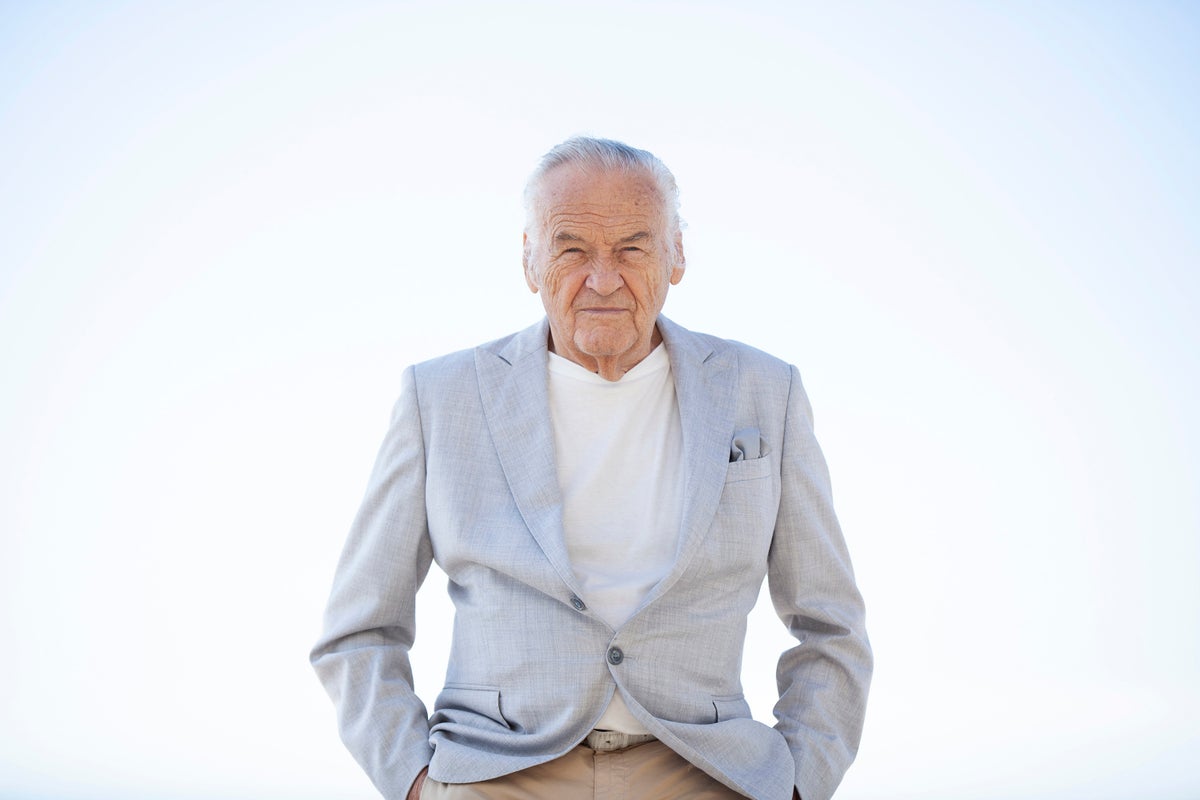
It was the eyes that did it. Filmmaker Jerzy Skolimowski had decided some years ago that his next film was going to be about an animal. He and his wife and co-writer, Ewa Piaskowska, had been getting bored of traditional movie structure and dialogue and wanted to do something different.
They didn’t know which animal to choose, though. Cats and dogs were out. That’s been overdone, they thought. Then they came upon the donkey, an intelligent, stoic creature with historic significance in not only religion but cinema as well, most famously in Robert Bresson’s 1966 masterpiece “Au Hasard Balthazar.” But it was those massive, expressive eyes that convinced them they’d found a star who could hold the frame.
The resulting film, “ EO,” is the story of a circus donkey who is taken from his owner and begins a long, spiritual journey through the modern Polish and Italian countrysides, encountering humans both kind and cruel. Eo doesn’t talk, but he does dream and you can't help but feel his burdens, his loneliness and his hope. It is, they said, a love letter to animals and it’s currently playing in theaters nationwide.
“We wanted this film to be more of an experience than a traditional feature film,” Piaskowska said in a recent interview with Skolimowski by her side. “We were very conscious of the fact that we wanted to speak to the viewer through emotions mostly because our hero is devoid of any words. The idea was from the very beginning that we don’t want to tell the story about the donkey, but that we want the audience to feel like it is a donkey.”
Skolimowski, who is 84 and has been making films since 1960, has received wide praise for the film in what has been a whirlwind year. After a very long production that began in 2020 and was delayed several times because of the pandemic, they finally wrapped in March and two months later were at the Cannes Film Festival where it won the jury prize. Since then “EO” has been selected to represent Poland at the Oscars, picked up several prestigious critics' group awards and was named the best film of the year by Manohla Dargis of The New York Times.
Though there were headaches because of the pandemic, the production was actually quite a serene undertaking. They employed six donkeys to play Eo, named Marietta, Tako, Hola, Ettore, Rocco and Mela, and everyone took care to create a relaxing and supportive environment to get the donkeys to do what they needed them to do.
“Everything was very quiet, very smooth,” Skolimowski said. “There was no rushing and people were really keeping down their nerves.”
If they needed the donkey to cross a bridge and the donkey didn’t want to cross the bridge, all they could do was wait.
“Time ceased to exist,” said Piaskowska, who also produced the film. “You give him some carrots and then you wait some more. Then you try the other donkey. I can’t tell you how much nicer sets were. Everybody uses a very gentle voice. Everyone’s smiling. We were like kids in kindergarten devising ways to convince the donkey to do this or that.”
Both give special credit to cinematographer Michal Dymek, who would sometimes shoot from the donkey’s point of view, and editor Agnieszka Glińska for canny cuts and juxtapositions that help make the performance and get the audience invested in the emotional life of the animal without the use of dialogue. Composer Pawel Mykietyn was even asked to think of the score as Eo’s inner monologue.
”Instead of having dialogue, he would produce the sound which would express the emotion, the mood of the animal,” Skolimowski said. “He did it in a perfect, perfect way. I think the film owes him a lot.”
Giving credit and praise is somewhat new for Skolimowski, he said. But perhaps part of the success of the film because of the cross-generational (and species) crew.
“I think the biggest difference between ‘EO’ and my other films is that for the first time, I was able to fully use the talents and enthusiasm and the goodwill of my collaborators,” Skolimowski said. “Before that, I was a little bit too selfish, putting myself in front of the film.”
He attributes the evolution to a 17-year hiatus from filmmaking in which he recommitted himself to painting, a passion he always had but never had enough time to practice. In that time, he said, he became, “a young, hungry artist, but not as selfish as I was as a young, hungry filmmaker.”
“Now I can be much more generous and generous towards my collaborators, who had enormous input in the film,” Skolimowski said.
—-
Follow AP Film Writer Lindsey Bahr on Twitter: www.twitter.com/ldbahr.







